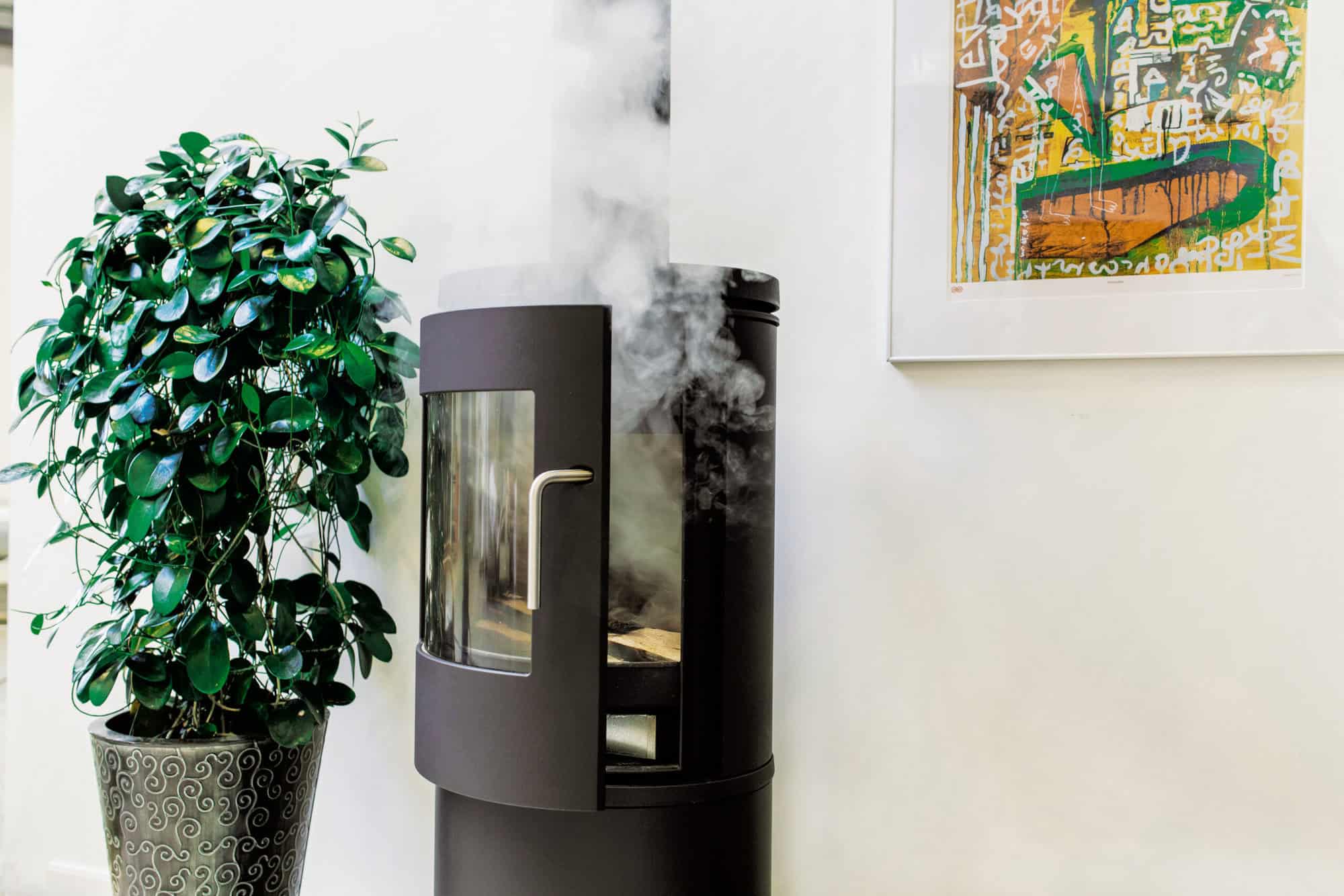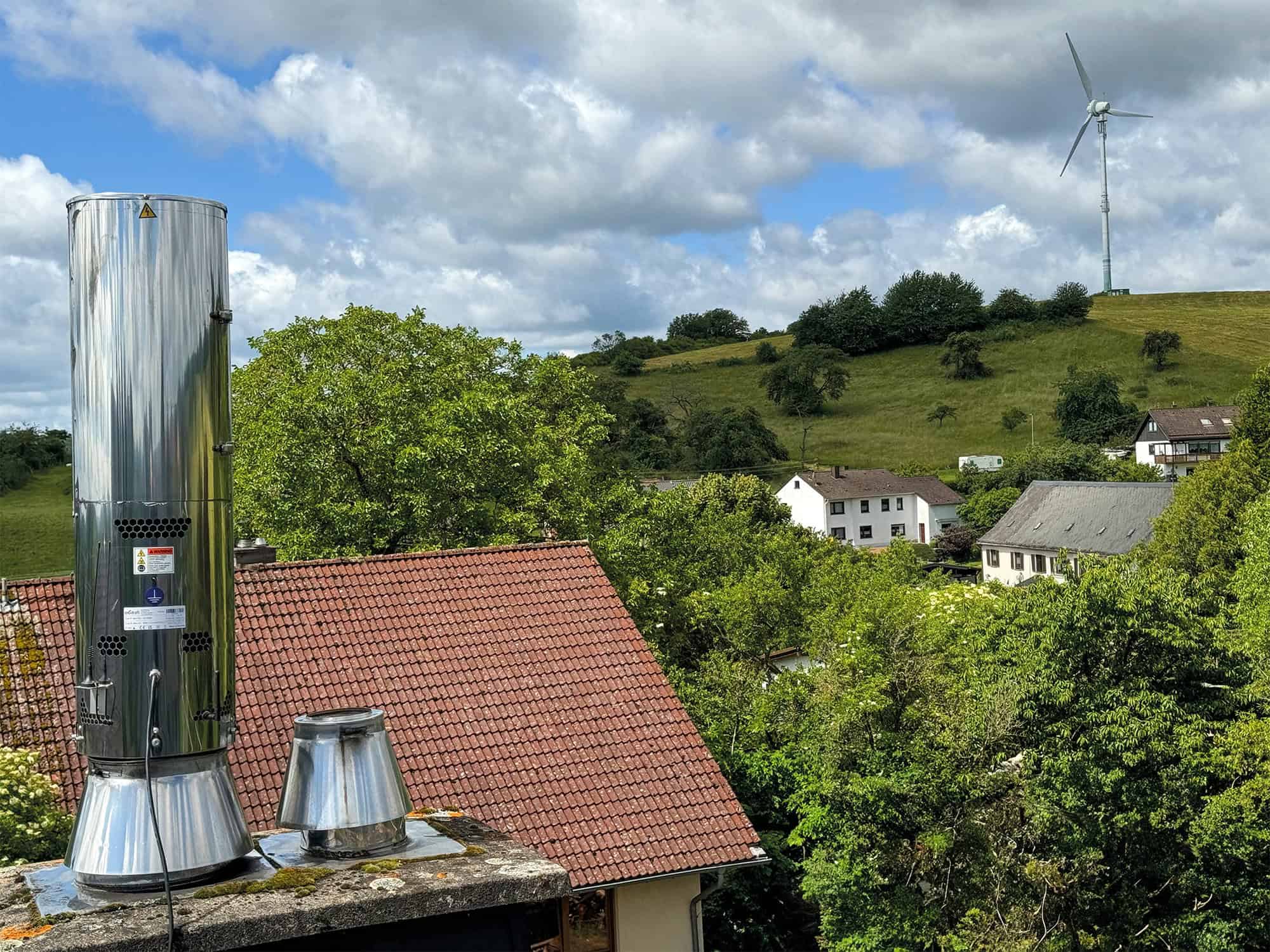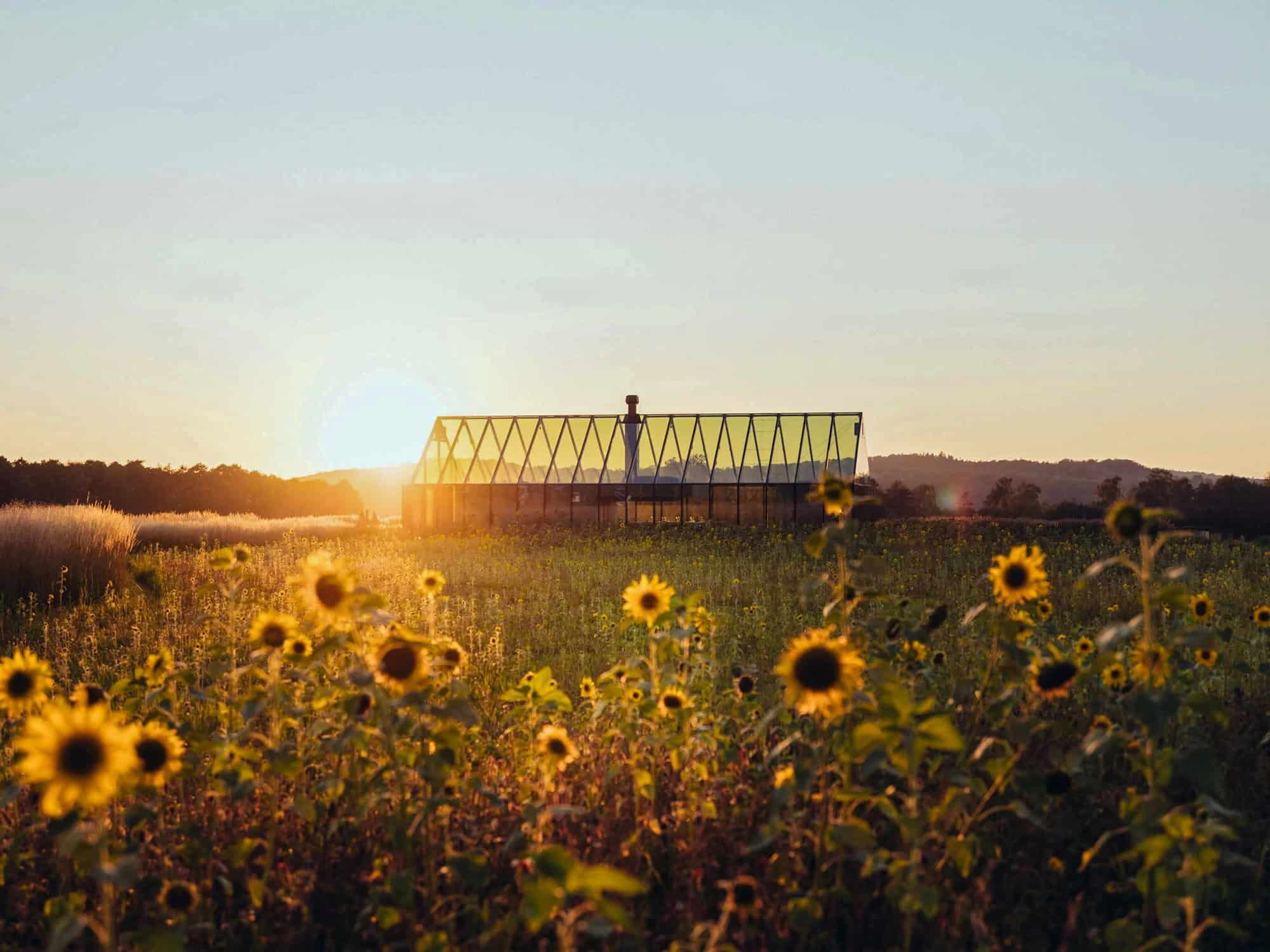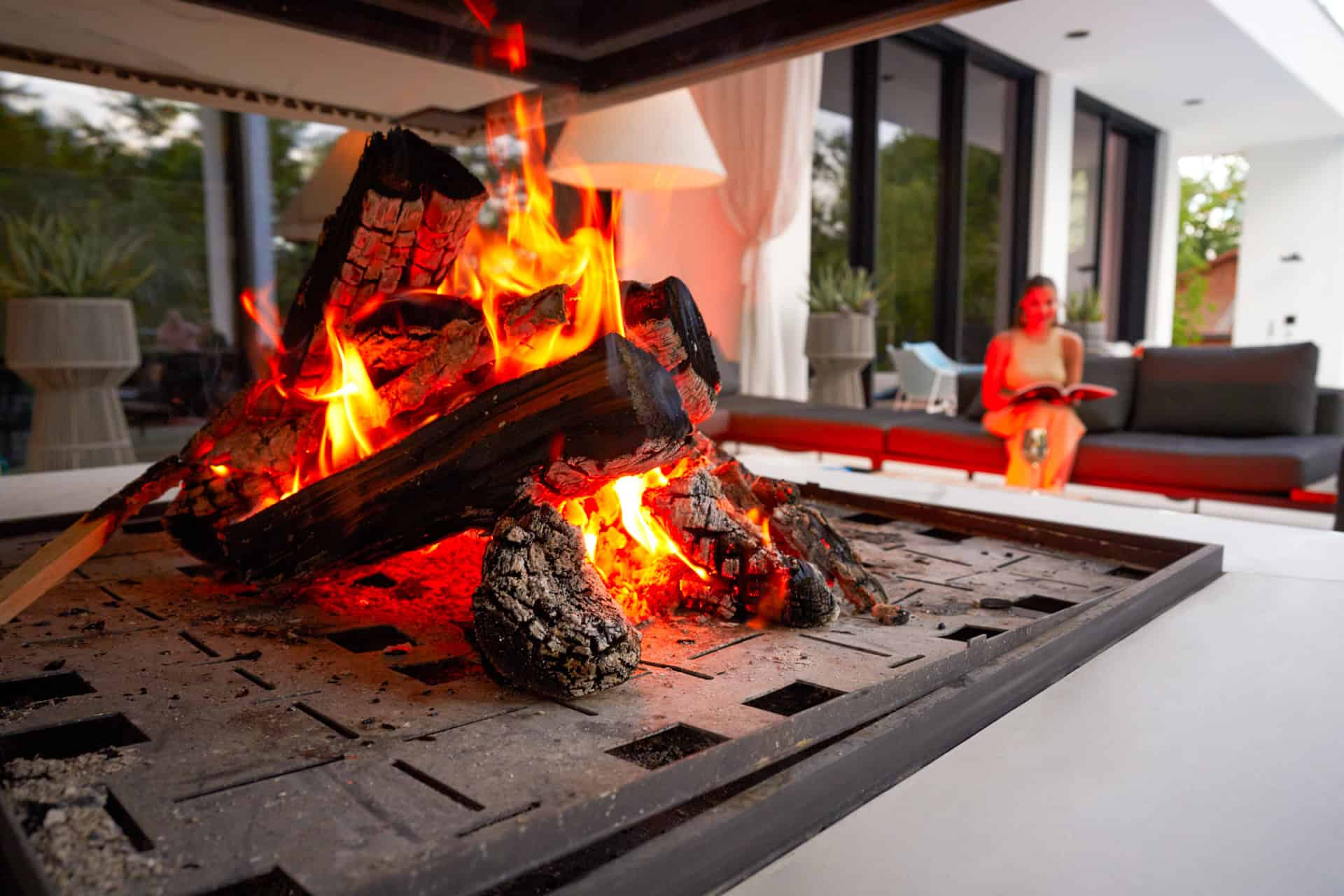Article
26. juni 2025 · 7 min
Is Wood Smoke Worse Than Cigarette Smoke?
Is wood smoke more dangerous than cigarette smoke? Discover how fine particles and toxic compounds in wood smoke impact your health — and how filters, chimney fans, and clean-burning practices can reduce the risks.

Wood-burning stoves have been a staple in British homes for generations, offering warmth and comfort during the colder months. However, growing concerns about air pollution and health risks have led many to question whether wood smoke is actually worse than cigarette smoke.
Both types of smoke contain harmful pollutants and fine particles, which can have serious health implications when inhaled. While cigarette smoke is widely recognised as a major public health hazard, recent studies indicate that wood smoke may pose similar, if not greater, risks, particularly in densely populated urban areas and poorly ventilated homes.
In this article, we will compare the toxicity of wood smoke and cigarette smoke, explore the latest UK and European research, and discuss how filtration and improved combustion methods can help mitigate the risks associated with wood burning.
Wood Smoke vs. Cigarette Smoke: A Toxic Comparison
While cigarette smoke is often associated with long-term health risks, wood smoke contains many of the same harmful compounds. Both produce fine and ultrafine particles (PM2.5 and PM0.1), which can penetrate deep into the lungs and even enter the bloodstream. These particles are linked to a range of respiratory and cardiovascular diseases.
Cigarette smoke contains over 7,000 chemicals, including formaldehyde, benzene, and carbon monoxide, many of which are classified as carcinogens. Wood smoke, although produced differently, releases a similar mix of harmful gases and particulates, including polycyclic aromatic hydrocarbons (PAHs) and dioxins, which are known to have serious health implications.
Unlike cigarette smoke, which dissipates relatively quickly, wood smoke lingers in the air for hours, especially in poorly ventilated homes. Studies have shown that homes using wood-burning stoves often experience higher levels of indoor air pollution than city streets with heavy traffic, particularly when burning is inefficient. This long-term exposure is what makes wood smoke particularly concerning from a public health perspective.
Recent research from King’s College London found that wood burning contributes up to 50% of PM2.5 pollution in some urban areas during winter, surpassing emissions from road traffic. Scandinavian studies have further highlighted the risks, linking prolonged wood smoke exposure to higher rates of respiratory infections and cardiovascular diseases. Meanwhile, the World Health Organization (WHO) has classified airborne particulates from wood smoke as a Group 1 carcinogen, the same category as tobacco smoke.
While the direct comparison between wood smoke and cigarette smoke is complex, both are clearly hazardous to health, with wood smoke affecting not just the individual but entire communities through wider air pollution.
Health Risks of Wood Smoke Exposure
Long-term exposure to fine and ultrafine particles from wood smoke has been linked to serious health conditions, particularly for children, the elderly, and those with pre-existing respiratory or cardiovascular conditions.
One of the most immediate concerns is the impact on lung health. Fine particles from wood smoke irritate the airways, leading to inflammation and an increased risk of asthma, chronic bronchitis, and reduced lung function. Studies show that individuals exposed to high levels of PM2.5 over time are far more likely to develop chronic obstructive pulmonary disease (COPD), as their lung capacity gradually declines.
The cardiovascular effects of wood smoke exposure are equally concerning. Fine particles do not just remain in the lungs; they enter the bloodstream, where they trigger inflammation and arterial damage. This has been directly linked to higher risks of hypertension, heart attacks, and strokes, as prolonged exposure to air pollution increases strain on the heart and circulatory system.
Furthermore, long-term exposure to PAHs and dioxins in wood smoke has been linked to an increased risk of lung cancer. These carcinogens, also found in cigarette smoke, can accumulate in lung tissue over time, leading to higher cancer rates among individuals frequently exposed to wood smoke pollution.
The biggest issue with wood smoke compared to cigarette smoke is prolonged and involuntary exposure. While individuals can choose to smoke or avoid cigarette smoke, wood smoke affects entire households and communities, particularly in areas where solid fuel heating is common. In many cases, individuals are unaware of the level of pollution they are exposed to, making it even more dangerous.

How to Reduce the Harmful Effects of Wood Smoke
Despite the risks associated with wood smoke, there are several effective ways to reduce its impact, making it possible to continue using wood-burning stoves while minimising harm to health and the environment.
One of the most effective solutions is installing a particle filter. Modern electrostatic particle filters can reduce 95% of fine and ultrafine particles, significantly lowering the amount of pollution released into the air. By trapping harmful particles before they escape the chimney, these filters help meet stricter environmental regulations while improving both indoor and outdoor air quality.
Another key improvement is optimising chimney draft with a chimney fan. Poor draft can cause incomplete combustion, leading to higher emissions and smoke leakage indoors. A chimney fan actively regulates airflow, ensuring more efficient burning, less soot buildup, and faster removal of harmful gases from the home.
Fuel quality also plays a major role in emission levels. Burning dry, seasoned hardwood instead of wet or softwood reduces the production of soot and harmful pollutants. Hardwoods such as oak, ash, and beech burn cleaner and more efficiently, producing less smoke and higher heat output per log. Additionally, avoiding waste wood, painted wood, or chemically treated materials prevents the release of toxic chemicals into the air.
Regular maintenance of both the stove and chimney is crucial to ensure clean and efficient operation. A poorly maintained stove can produce significantly more emissions, so routine cleaning and checking seals and vents for proper airflow can make a major difference. Upgrading to an Ecodesign stove, designed to burn fuel more efficiently with fewer emissions, is another way to future-proof wood heating.
By implementing these improvements, homeowners can continue using wood-burning stoves while significantly reducing health risks and environmental impact.
How to Make Wood Burning Safer and Cleaner
While wood smoke and cigarette smoke share many health risks, the impact of wood-burning stoves can be greatly reduced through modern filtration, ventilation improvements, and responsible burning practices.
Rather than eliminating wood burners altogether, the best approach is to upgrade and optimise them by:
- Installing a particle filter to reduce 95% of fine and ultrafine particles.
- Using a chimney fan to improve airflow and reduce smoke exposure.
- Burning the right type of wood to minimise pollution.
- Maintaining the stove and chimney to ensure clean combustion.
With these steps, wood-burning stoves can remain a viable heating option while minimising the risks associated with wood smoke exposure. By embracing cleaner burning technologies, homeowners can protect their health while continuing to enjoy the benefits of wood heating.

exodraft














